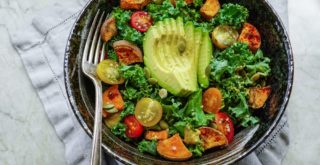It seems to be an age-old debate as to how many servings of produce we should be eating each and every day. More than likely, when you were young, you heard one number, and your parents tried to be sure that you stuck to that no matter what.
As you got older, though, you may have found that the number changed a bit, as did your own needs. You may be somebody who still continues to focus on fruits and vegetables as part of eating right. You may be somebody at the other end of the extreme, who doesn’t eat much produce at all. No matter where you fall in this, understanding the overall guidelines can be quite important to being your healthiest and best.
Start by understanding general guidelines when it comes to how many servings of produce we need every single day. Overall, you will hear that the servings should come in the way of how many cups, and that’s a significant change. It used to be that you would hear “8 to 12 servings per day,” but that was a rather ambiguous figure and often hard to determine. Nowadays, though, you will hear that eating anywhere from 1.5 to 3 cups of fresh fruits and vegetables each day is the way to go. That’s much easier to measure and to visualize. This goal may be very easy for you to achieve, or it may mean you have some work to do, but at least you have a visual reminder to help.
Consider Your Own Individual Needs as a Starting Point
The number of servings of produce you need depends on several factors. You have to think about your gender, as men will usually be required to eat more. This is based predominantly on the fact that men should eat more calories in a day than women must. When you are younger, you too may have more needs for the nutrients in produce, but this can also hold true for seniors. So think through your own needs and body type as well as your activity level. The factors that make up your individual health snapshot and lifestyle will be very telling in terms of precisely how many servings of produce you need.
A good way to get to the proper servings of produce you need each day is to fill half of your plate with fruits or vegetables. Then you can add in lean protein, good fats, and whole grains, but the focus should be on fruit and vegetable servings. Try to make eating these foods inherent to every meal and snack; often it helps to make them the feature act. If you think of the true nutritional benefits that produce offers, then getting to the proper servings each day shouldn’t be too hard—and you will find that you feel much better and healthier for the effort!



















